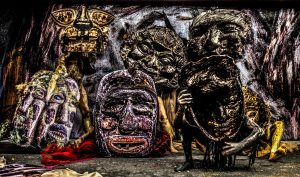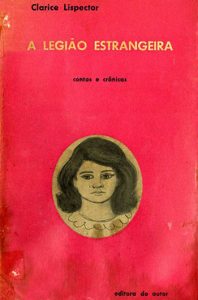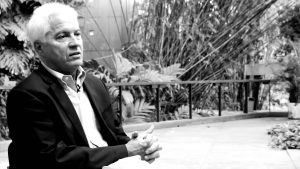Demetrio dos Santos, Matildes. In Search of Clarice Lispector: The Biographical Challenge of Teresa Montero. IMS Clarice Lispector, 2022. Disponível em: https://site.claricelispector.ims.com.br/en/2022/06/29/in-search-of-clarice-lispector-the-biographical-challenge-of-teresa-montero/. Acesso em: 08 January 2026.
1. The Aim, the Path
Writing steals time for living and gives many advantages.
Leonor Arfuch
In addition to confirming the value of the biographical genre as a privileged means to meet the demands of a curious public about the past of famous personalities, Teresa Montero challenges the genre’s conventions by reconstructing the family life, personal experiences, friendships, and creative process of Clarice Lispector, an author who, with all her strengths, gave life to her vocation for literature as a fatality and a salvation. Part of her personal correspondence revolves around the struggle that she maintained against herself to arrive at a result that she would consider literarily satisfactory, or the way that she does not cede to fatigue in the midst of the activity of a restless and paradoxical thinking: “I didn’t write a line, which disturbs my rest. I live in wait for inspiration with an avidness that gives no rest. I even arrived at the conclusion that to write is the thing I most desire in the world, even more than love” (Lispector, 2007, p. 23).
In her desire to preserve the virulence of a memory that does not succeed in keeping a distance, Teresa Montero remains close to Clarice Lispector. In her memorative activity, she always returns to her. The first personal appropriation resulted in Eu sou uma pergunta (I Am a Question), a conscientious reconstruction about the life and work of the writer. The 1999 biography not only offered the illusion of intimacy with the life created in the artifice of writing, but also informed the reader about biographical data for the benefit of the novelist herself: “At that time, there were no biographies of the author. The publications that traced her itinerary were very rare” (Montero, 2021, p. 11).
Due to the importance of research in favor of authenticity and the desire to preserve the representative collection of Clarice Lispector, many other books came. The task is Herculean and it is often difficult to escape the suggestive force of this memory. Such is the case of O Rio de Clarice – passeio afetivo pela cidade (Clarice’s Rio: An Affective Tour Through the City – 2018), which recreates the preferred tourist route through the biographed personality. Fruit of a touching sensibility, Montero’s work transcribes a landscape in which Clarice is inscribed and can be told in the actual space of exhibition:
The creation of the “Espaço Clarice Lispector” (Clarice Lispector Space) at the Rio de Janeiro Botanical Garden and the statue of Clarice Lispector and her dog Ulisses in Leme, sculpted by Edgar Duvivier, are the fruit of this project with the participation of her readers, signs of the writer’s presence in the city that embraced her for twenty eight years. (MONTERO, 2021, p. 20)
Nonetheless, a personality as seductive as that of Clarice does not end so easily and, without fear of imagining another biography about the artist, Teresa Montero published, in 2021, À procura da própria coisa (In Search of the Thing Itself), an enunciation in which one recognizes the passionate albeit measured presence of the researcher while appropriating intimate secrets of the biographed, discovering her friendships and her worldview, recognizing her loneliness, and surprising her creative process.
The choice of the main title is a tribute to and remembrance of the biographed, for it is she who speaks in the title, and it is about her that the work is concerned. Montero reused Clarice’s affirmation, taken from “Aproximação gradativa” (Gradual Approximation), a short text published in Senhor magazine in November 1962, to serve the imagination of the reader, recognizing in it the living metaphor of the historical creative process of the writer: “If I had to give a title to my life it would be: in search of the thing itself” (Lispector, 2018, 594).
The title is, therefore, an incentive to examine more closely that which is proposed as an enigma. However, recollecting is not just a matter of conserving or reconstituting what has passed or been lost, but also a force against the desire to forget and repress. In the “Apresentação” (Presentation), the biographer reveals that the work of remembering Clarice Lispector came in the midst of the problem of losing her position as a university professor on the eve of retirement, a violent shock added to the suffering of seeing the Covid-19 pandemic spread throughout the world and arrive in Brazil, leaving a trail of deaths along the way.
It is in the midst of this crisis that it has become mandatory to react and fight for the consignment of a long-term memory, which has meaning and value in the present and is a normative reference for the future. Teresa Montero’s book reacts with revolutionary force in the context of a troubled time, a resource that aims to intervene in the injustices and frivolities of history: “Therefore, the spirit that contaminates this volume is that of the belief in solidarity and peace. The life and work of Clarice Lispector convey these values” (MONTERO, 2021: 23).
Let us proceed with our reading…
2. The Plural Narrative, the Voices
My accumulated knowledge is what makes his face shine on the piece of paper.
Silviano Santiago
In the back-and-forth mechanism, which is typical of the biographical method of investigation, short stories, personal accounts, dedications, newspaper and magazine clippings, letters, photos, interviews, and audiovisual recordings are fortuitous and promising encounters. It is precisely the discovery of memories about life, subjectivity, and the creative artifices of Clarice Lispector that granted the word from which À procura da própria coisa was born.
From beginning to end, in the four parts that constitute the work, the repertoire of knowledge about the biographed includes both the cultural memory, which is kept in public and private archives, and the communicative memory, which is perpetuated in the recollections transmitted orally by means of the accounts of friends and relatives. In the opening chapter, “A primeira entrevista para a TVE” (The First TVE Interview), Clarice’s personal and corporeal memory appears in an audiovisual recording. Paradoxically, it is she, an image that becomes more alive than one could imagine. As Montero points out, it concerns the author’s presence in Os Mágicos, on TV Educativa (currently TV Brasil), a program conceived by Araken Távora (MONTERO, 2021, p. 39).
The “event that dialogue in its countless accentuations would be capable of restoring” (ARFUCH, 2002, p. 179) has the merit of being accompanied by critical reflections, written in a clear language and with an abundance of evidence, which are open to new interpretations. If the image is in itself an amalgamation of symbolic representations about the staged persona, the event, in turn, extends far beyond its limits: cinematic material, public archives, and voices from the past.
The themes are as instigating as they are revealing. It is not by chance that the researcher arrives at the Public Archives of the State of Rio de Janeiro and the National Archives to excavate the markings of Clarice Lispector in the territory of the authoritarian police of the Eurico Gaspar Dutra administration in 1950, and later in the wake of the dictatorial regime that established itself in power with the 1964 coup.
Clarice’s voice becomes audible, persecutors appear from the place of recollection, the “green files” (fichas verdes), which prove the action of the Special Police for Public and Social Security (DESPS/DPS – 1950) against the person of the writer, reveal the persecutory content. Carefully, the biographer moves what is most distant and approaches what is closest to prove that Clarice was not spared from being harassed by the fanatical disbelief of right-wing radicals, who acted in the main intelligence agency of the military dictatorship, the National Information Service (SNI). There are documents about “Clarice Gurgel Valente/Clarice Lispector and her participation in events considered subversive” (MONTERO, 2021, 56).
In the situation, Clarice Lispector’s individual memory is seen to be affected by her contact with figures from the past, creating a chain of kinship among the deceased. Suddenly, what was distant is shown in another light. At the time, Ferreira Gullar – author of Dirty Poem (1976) –, who had recently returned from exile, granted the writer an interview, which was published in the Fatos & Fotos magazine. The initiative in the conversation was left to the interviewer, who did not hide her admiration for the originality of the style and worldview of the committed poet. In addition to the praise, she had the courage to declare herself against the political gears that fostered inequality and injustice among the poorest. Thus, to an observation by Gullar about the population that rode the bus in Rio de Janeiro, the interviewer added: “I felt the same in Colombia, Gullar, where there were multimillionaires and the rest were completely abandoned by everyone, including the government. There, the poverty is more extreme than in Brazil, because everything is worse in the cold.” (MONTERO, 2021, p. 68).
Leaving the situation of a “museum piece,” attitudes, actions, and behaviors acquire relevance and are subject to new interpretations. The totalitarian regime of 1964-1970 imploded with the human capacity to apprehend and think freely, and within this context, the artist was far from having a positive unanimity around her name. She suffered from the opinion of left-wing radicals, who judged her to be ill-defined and politically alienated. To overcome this prejudiced idea, Montero presents the Henfil versus Clarice episode. On the occasion, the cartoonist of O Pasquim buried the novelist in the Cemitério dos Mortos-Vivos (Cemetery of the Living Dead), under the accusation that she lived “inside a Little Prince bubble, to remain in a world of flowers and little birds, while Christ is being nailed to the cross” (MONTERO, 2021, p. 71).
The accusation causes revolt, however the unique way with which Clarice went through the crisis and reacted to the insult adds another dimension to what happened. She did not deny it or look to confront him, but when they asked her about the occurrence, she replied with unrestrained and shrewd irony: “If I met him the only thing I’d say is: Look, whenever you write about me, Clarice, it’s with a C and not two S’s, OK? That’s the only thing I’d say to him. Nothing else” (idem, p. 72).
Since the place of recollection interweaves present and past, presence and absence (ASSMANN, 2016, p. 360), the biographer reconstitutes the incident and seeks a justification that rehabilitates the journalist before the reader. With conviction, she recalls that Henfil was one of those traumatized Brazilians, who did not resign himself to those that he considered collaborators or sympathizers with the regime: Betinho, the cartoonist’s brother, had been exiled in Chile since 1971, and he feared that he would be killed at any time.
The concern for the study of singularity and the attention given to emerging phenomena help in thinking about the remembered as a complex and singular enunciation, linked to a time and a space. The biographer, in her tireless pilgrimage through the archives in search of documents and witnesses, is involved with the biographed identity and plurality becomes the watchword. In the work, the exceptional character of Clarice’s personality is fragmented into multiple selves and is always enmeshed in new mutations.
In the “Itinerário de uma mulher escritora” (Itinerary of a Woman Writer, pages 39 to 109), on June 22 and 26, 1968, in the midst of the struggle against the anti-democratic acts of the military dictatorship, she appears in two moments, alongside Carlos Scliar, Oscar Niemeyer, Glauce Rocha, Milton Nascimento, Paulo Autran, Odete Lara, Tônia Carreiro, and Dias Gomes. In the chronicles written for the Jornal do Brasil, she is the sensible woman who translates into words the feeling of disenchantment that a composer such as Chico Buarque de Hollanda related. In the February 4, 1968 column, it is clear that the narrator thinks that the silence imposed by repression made many artists lose their voices and become very sad. The observation amounts to a confirmation: “Chico is handsome and shy, and it’s sad. Ah, how I’d like to tell him something – what? that would lessen his sadness” (LISPECTOR, 2018, p. 73).
There are many Clarices in Teresa Montero’s biographical narrative. One discovery leads to another and gives the impression that the identity of the writer is infinite and there is always something new to learn. By penetrating the private archive of Clarice Lispector, the biographer not only occupies a place among the author’s family members, but from the tangle of those lives she causes figures that are somehow forgotten or repressed to emerge. Among the archives, she has the pleasure of encountering Retratos antigos (Old Portraits — 2012) and No exílio (In Exile — 1948), books written by Elisa Lispector. The literary competence and testimonial stance of her eldest sister explain everyday minutia of the Lispectors’ ancestry that had theretofore been silenced. Montero perceives in Elisa’s efforts at recollection a therapeutic support for her ancestors, which also included all other survivors of the same origin:
The main guardian of the family memory made literary fiction her way of being in the world and an instrument for leaving a testimony about her ancestors of Jewish origin, born on Ukrainian soil, of Russian nationality, who found in Brazil the possibility of rebuilding their lives. (MONTERO, 2021, p. 131)
Clarice’s childhood is thus conceived with the help of what Elisa saw, considered, and recovered in her quality of mediator of silenced voices. Consequently, Marian, or Marim, as she was affectionately called by the members of the house, and Pedro appear in the narrative. The mother, with the suffering that befell her, is the ghost of the pain that hovered over her own; the father was the mentor who influenced the daughters with his taste for literature, music, and Jewish culture. Elisa was born into literature as per her father’s wish. To him she dedicates Além da fronteira (Beyond the Border — 1945), her first novel. In the life repertoire of the three daughters, music is always present. Clarice said that “she took a liking to reading from her father always saying that books contained wonderful stories, that whoever read ended up being a better person” (MONTERO, 2021, p. 176).
There is also no lack of an element of pleasure in the reconstruction of this past – a playful attitude on the part of the biographer, who delights in taking a seat at the family table. She says that Tania Kaufmann liked roast chicken and mashed potatoes with fried chicken lard. At parties, the snacks and sweets chosen prolonged the happy moments. She even glimpses an immediate illusion when she links Clarice’s favorite dishes to the cooking recipes that the author suggested in the women’s columns of the newspapers, where she collaborated under the pseudonym Tereza Quadros, at Comício, Helen Palmer, at the Correio da Manhã, and Ilka Soares, at the Diário da Noite.
As it was constituted, the domestic tableau is fun and ends with a note from an anonymous author, who speaks about the female essence of the biographed in a light and relaxed tone, which contributes to offering another profile to the writer’s gallery of selves: “Clarice Lispector, a woman full of talent, a first-rate novelist, all charm and friendliness, confided her culinary preferences to me in an informal and pleasant chat at our Petit-Club” (MONTERO, 2021, p. 169).
In this yearning to give life to the “unreachable” personality of Clarice, the gaze that strives to investigate in detail arrives at the photo album, with its frozen portraits. In the imaginary exchange with the images, she prefers the poses, which tell a story and mark phases of that existence. Life thus individualized gives the feeling of possession, arouses emotions, and has the strange power to bring the absent closer, a wealth of images that are offered to the imagination. So many years ago, what was happening to Clarice to let herself be photographed like that?
In the variable arrangements of the final chapters, everything that is rooted in the everyday fascinates the biographer. In the form of a disguised diary, important or insignificant events, encounters, walks, lectures, thoughts, people, books in gestation, and those already published, appear by surprise, with indications of places and sometimes of dates. The notes give the false impression that they were written quickly, when, in fact, they are deviations that combine fact and fiction. The “biographical space” (Leonor Arfuch) simultaneously proposes the place, time, and action of the biographed: “While she wrote the final lines of The Besieged City, nature advised her that the time had come for the child to be born.” (MONTERO, 2021, p. 577).
In this way, in the ambition of creating an “effect of experience” (François Dosse), Teresa Montero invites the reader to return to the primary sources, to verify their authenticity, to gather different complementary facts and try to understand the proper meaning of each historical document. And by opting for discontinuity and a multiplicity of voices, she makes it possible to apprehend Clarice Lispector’s life, convictions, and struggles not as an absolute truth or synthesis, but as a life story open to new interpretations.
Bibliographical References
ARFUCH, Leonor. El espacio biográfico: Dilemas de la subjetividad contemporánea. Buenos Aires: Fondo de Cultura Económica, 2002.
ASSMANN, Aleida. Espaços da recordação: Formas e transformações da memória cultural. Trad. Paulo Soethe. Campinas, SP: Editora da Unicamp, 2011.
DOSSE, François. Le pari biographique. Écrire une vie. Paris: La Découverte, 2005.
GENETTE, Gérard. Paratextos editoriais. Trad. Álvaro Faleiros. São Paulo: Ateliê editorial, 2009.
LISPECTOR, Clarice. Minhas queridas. Notas Teresa Montero. Rio de Janeiro: Rocco, 2007.
_________________. Todas as crônicas. Org. e Posfácio Pedro Karp Vasquez. Rio de Janeiro: Rocco, 2018.
MONTERO, Teresa. À procura da própria coisa: Uma biografia de Clarice Lispector. Rio de Janeiro: Rocco, 2021.
SANTIAGO, Silviano. Mil rosas roubadas. São Paulo: Companhia das Letras, 2014.







